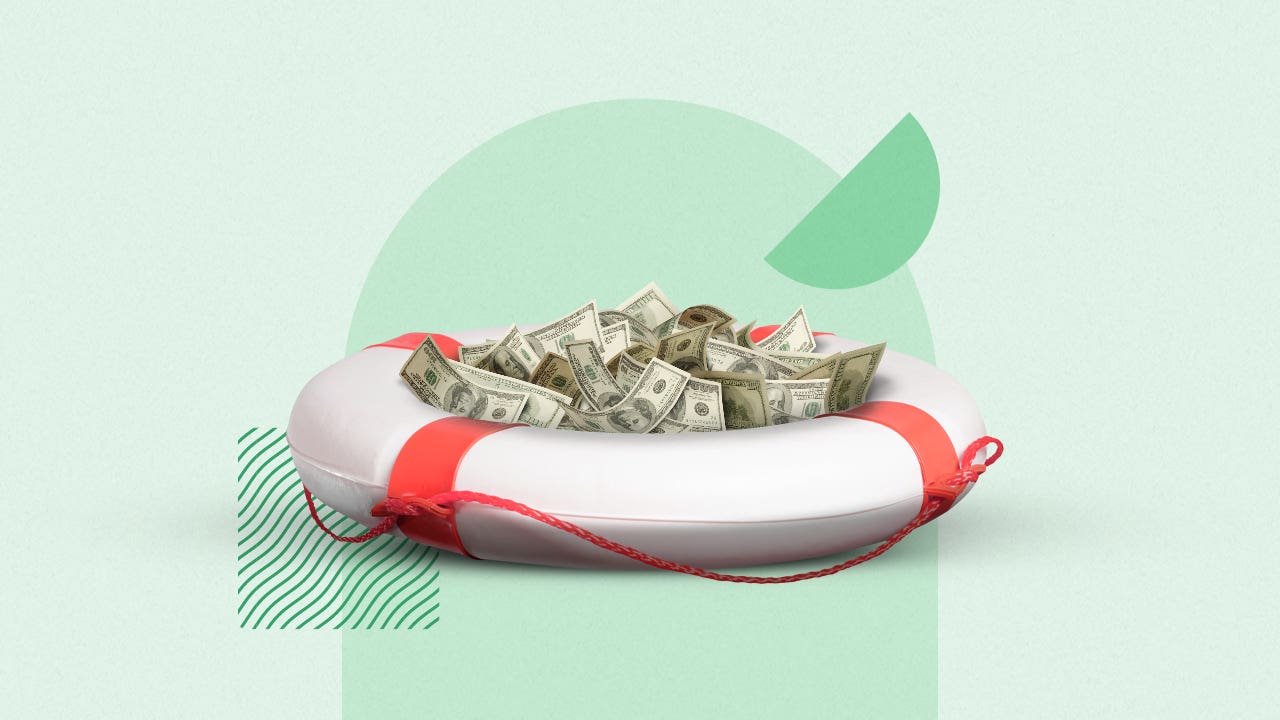Emergency fund amount: How much should you have in emergency savings?

When unexpected expenses arise, having an emergency fund can provide peace of mind and financial stability. However, Bankrate’s 2024 Annual Emergency Savings Report found that the majority of U.S. adults (56 percent) do not have enough emergency savings to cover even three months of expenses.
So, how much emergency savings should you have? For some, following the standard advice of three to six months of living expenses might be sufficient. Others, however, may prefer to save more or less than that amount, depending on factors such as income, cost of living and household size. That savings can go into a money market or high-yield savings account, where it can grow with interest and have some liquidity.
Thus, the answer may vary depending on individual circumstances, but one thing is clear: having some emergency savings is crucial. Knowing you have a safety net can help alleviate some worry, as Bankrate’s Money and Mental Health Survey found that 47 percent of Americans say money negatively impacts their mental health, at least occasionally.
If you’re not sure how much to save for the unexpected, here are some scenarios to consider.
Emergency fund statistics
Bankrate’s 2024 Emergency Savings Report found that:
- A majority of U.S. adults (59%) are uncomfortable with the level of emergency savings they have.
- Only 16% of U.S. adults have between three and five months’ expenses saved..
- Roughly 6 in 10 respondents (63%) say they’d need at least six months of expenses saved to feel comfortable..
- Over a third (36%) of people have more credit card debt than emergency savings.
- Nearly one-third (29%) of Gen Zers (ages 18-26) do not have emergency savings — almost twice as many as the 16% of baby boomers (ages 59-77) who have no emergency savings. Baby boomers are also more than three times as likely to have enough savings to cover six months or more of expenses as Gen Zers (46% and 11%, respectively).
- Annual income also greatly factors into how much someone has in emergency savings—more than half of households (56%) earning over $100,000 annually are comfortable with their emergency savings.
How much emergency savings should I have?
Personal finance is personal. What might be right for one person may not be the best option for another. It’s good to listen to financial experts and understand why they advocate saving a certain amount, but ultimately what matters is whether you’re comfortable with your emergency savings. That could mean two years or two months of emergency savings, depending on your goals. As long as your savings doesn’t sabotage other financial goals, set aside whatever you need to avoid worrying about paying for the unexpected.
“The more unstable your income is, the more you should probably keep in an emergency fund. Also, the higher your insurance deductibles are, the more you should be keeping in an emergency fund,” says Erik M. Baskin, founder of Baskin Financial Planning based in Sugarcreek Township, Ohio. “A family that has two stable incomes and no kids needs much less in emergency savings than a single income household with four kids.”
If you’re not covered as much as you’d like, create a savings plan to get you there, even if it means starting slow with $10 to $100 a month. Small savings can truly add up.Look at your budget and monthly income to determine how much you need for living expenses and how much you can save and invest in other areas of your life, like emergency savings.
To get more insight on how much and what strategies to save for emergencies, consider working with a financial advisor for personalized help.
When you might want a bigger emergency fund
Saving several months’ worth of earnings seems like a daunting task. One thing to remember, though, is that building an emergency fund means saving up to cover basic living expenses, not replacing your entire income. So, if your monthly expenses add up to $2,500, you’ll need to save $7,500 to reach three months of emergency savings.
There are times, however, when you might want to continue saving beyond experts’ recommendations.
To establish an emergency savings cushion, or add to what you have, set up a direct deposit from your paycheck or an automatic transfer from your checking account into a dedicated savings account. Automating the savings is the key to making it happen, particularly with household budgets so tight.— Greg McBride, CFA , chief financial analyst for Bankrate
Some instances when it makes sense to have a bigger emergency fund include:
- Your income is unstable: If you lack job stability or work in a high-risk industry, you may want to save more to make up for the possibility of having no income.
- You are self-employed: If you work for yourself, having a large emergency fund can help you get through times of fluctuating income throughout the year.
- You are retired: Having adequate savings is key if you’re retired and much of your income comes from your investments accounts.
- You have medical bills: If you’re dealing with medical issues that may require surgery or ongoing medical care, saving beyond the norm can help bridge the gap when insurance doesn’t cover all of your medical bills.
- Uncertainty in your life: Unexpected emergencies are a part of life, but there are times when you may be more vulnerable to added costs. If you drive an older, unreliable car or know your home will need some large repairs down the road, having extra savings can protect you in the long run. For single parents with kids at home and no secondary source of income, saving money can provide some peace of mind to know they are cared for regardless of what happens.
- Caring for dependents: If you have children or other dependents relying on you for care, it’s important to factor the costs of caring for them into your emergency fund.
- There’s an economic crisis: Global and national events like a recession or a pandemic are out of your control. During times like these, it’s always nice to know you have money saved to cover the unexpected.
When you might want less emergency savings
Below are some reasons why you may buck traditional advice and carry leaner emergency savings.
- You have few expenses relative to your income: Depending on your situation, you may not have very many living expenses. Maybe you don’t own a home or car, or they are paid off already. If your living expenses take up only a small portion of your income, you may be fine with a smaller emergency fund.
- You have no dependents: Having children and other dependents often means higher expenses and more responsibility. You have to make sure you’re covered if something happens and you’re unable to work or provide for your family. If you have no dependents, though, you don’t need to save more money for others’ living expenses.
- You have credit card debt: If you have high-interest credit card debt, you may be better off building a smaller emergency fund and putting the rest of your money toward getting out of debt. Focusing on getting out of debt can help you save more in the long run by canceling out expensive interest charges. However, it’s still important to keep saving and contributing to a savings account with a high yield so your money can grow.
How to build an emergency fund
To ensure every dollar saved is maximized, folks looking to build an emergency fund should consider a high-yield savings account.
Many big institutions, such as Bank of America and Chase Bank, are still offering mediocre yields on their savings accounts — and this can really dampen the saving potential of your dollar. In fact, two-thirds of savers are still earning less than 4 percent APY on their savings account, according to a Bankrate’s Savers Survey. This is the case even though many online-only banks are offering savings accounts with yields at or surpassing 5 percent APY.
Thus, finding a top-notch savings account can help build your emergency fund drastically over time, especially when combined with a consistent savings strategy, no matter how small the contribution.
Here are some tips on saving:
- Reduce expenses by reviewing spending habits, automating savings and comparing options for services like mobile and cable.
- Cut costs through energy-efficient measures that help save on utility bills.
- Find ways to save on groceries and household items, such as switching to generic brands.
- Regularly shop around for car insurance and use coupons and promotional codes when shopping.
- Set a budget and try your best to stick to it.
FAQs
—René Bennett contributed to a previous version of this article.






